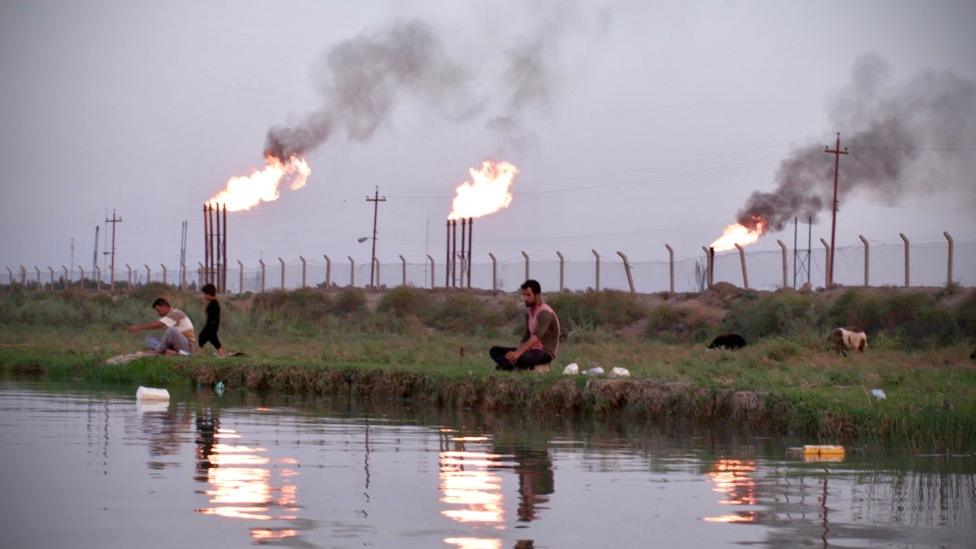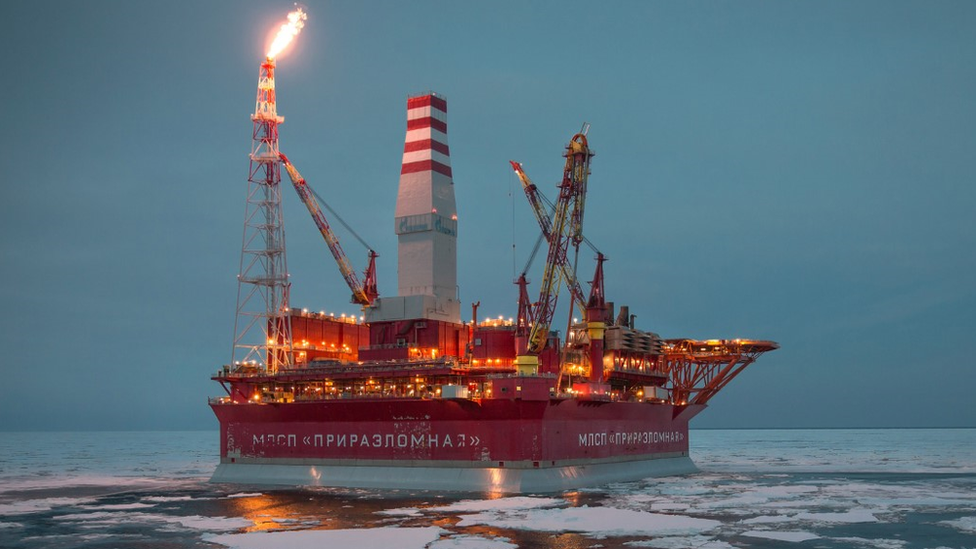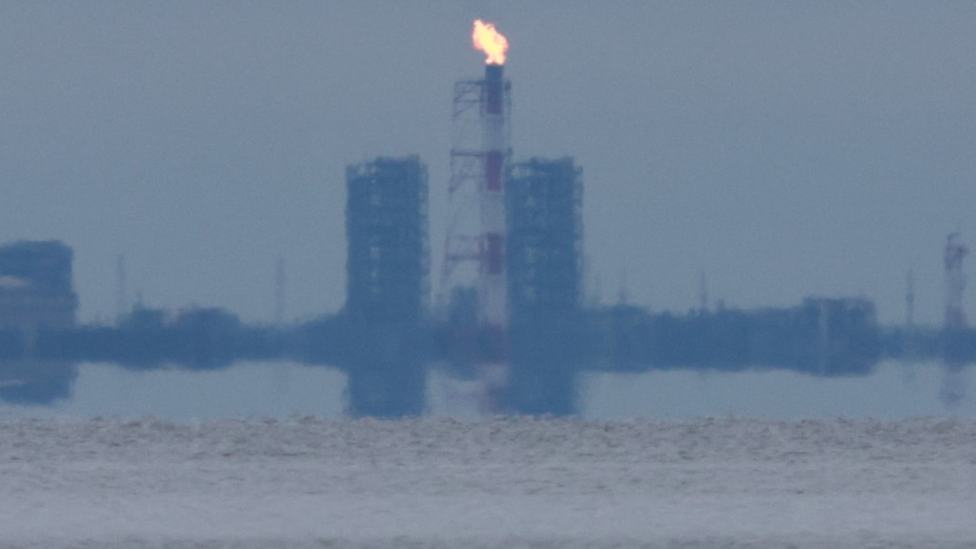Gas flaring: What is it and why is it a problem?
- Published

Gas flaring puts the equivalent of over 400m tonnes of carbon dioxide into the atmosphere
The process known as "gas flaring" has been condemned as a danger to the environment and human health, as well as a waste of fuel.
The World Bank is calling for energy companies to stop almost all flaring by 2030.
What is gas flaring?
Gas flaring is the term for burning off the gas which comes out of the ground while drilling for oil.
The flares are the giant flames often seen coming out of smokestacks on oil installations.
Gas can also be flared on the ground, at the top of an oil well.
The practice is most common in countries such as Russia, the USA and the Gulf States.
The World Bank estimates that globally there are 10,000 gas flares alight at any time, external and says the amount of gas burnt off this way last year could have powered the whole of sub-Saharan Africa, external.
Why do energy companies flare gas?
Sometimes, it's essential to flare gas for safety reasons.
Oil collects underground in reservoirs and gas accumulates around it, which has to be drawn off before the oil is drilled.
If there are sudden increases in pressure as the gas comes to the surface, explosions may occur.
Burning off the gas is a way of reducing the pressure.
This is known as "safety" or "non-routine" flaring.
However, energy firms often also flare gas as a way of saving money.
If they are drawing off only small amounts of gas - or are drilling in a remote area - they may not think it worthwhile to spend money on collecting it and transporting it.
Then, the gas is burnt off simply to get rid of it. This is known as "routine flaring".
How does gas flaring harm the environment?
The World Bank estimates that in 2021 energy companies flared 144 billion cubic metres of gas, external, putting into the atmosphere the equivalent of over 400m tonnes of carbon dioxide.
That is equivalent to the carbon dioxide emitted in 9 trillion miles of car journeys.

Gas flaring is one of the reasons why the Arctic ice cap is melting
Gas flaring also produces "black carbon", or soot.
The European Geosciences Union says gas flaring is responsible for 40% of the black carbon which has built up in the Arctic, and is a key reason why the Arctic ice cap is melting.
How does gas flaring harm people's health?
Gas flaring puts a chemical called benzene into the air, which can give people who live nearby headaches, tremors and irregular heartbeats, external. Benzene can also cause cancer.
Gas flaring also produces naphthalene, which can damage the eyes and the liver, and is another possible cause of cancer, external.
Black carbon from gas flaring can cause breathing difficulties, respiratory disease, heart disease and strokes, external.
One study from the US suggests it can cause women to give birth prematurely, external.
Which countries flare gas the most?
According to the World Bank's Global Gas Flaring Tracker Report, Russia, Iraq, Iran, the United States, Venezuela, Algeria, and Nigeria have been responsible for most gas flaring over the past 10 years.
It says Mexico, Libya, and China have also increased gas flaring in recent years.
These 10 countries together produce half of all the world's oil and are responsible for 75% of gas flaring.

Russia burnt gas at its Portovaya plant rather than selling it to Europe.
Russia has recently been flaring an estimated $10m worth of gas every day at a plant in Portovaya near the border with Finland, at a time when Europe is experiencing an acute natural gas shortage.
Experts say this is gas which it would previously have exported to Germany through the Nord Stream 1 pipeline, which Russia closed in early September.
The World Bank is trying to persuade energy companies to stop all unnecessary flaring of gas by 2030 under its Zero Routine Flaring scheme, external. It acknowledges measures to cut gas flaring could cost companies more than $100bn.
Since 2015, 54 energy companies have signed up to its scheme, and so have 32 national governments, including those of the US, Russia, Saudi Arabia and Iraq.
Norway has started taxing energy firms for gas flaring and as a result has the lowest gas flaring rates of all the big oil-producing countries.
The World Bank points out there have already been reductions in gas flaring globally over the past two decades.
While oil production has increased by roughly 20% since 1996, the amount of associated gas flared has decreased by 13%.
What are the alternatives to gas flaring?
The World Bank is urging energy firms to gather the gas and sell it to businesses and consumers.
However, the gas needs processing before it's safe to use as it contains harmful chemicals.
This is expensive, which is one reason why some companies prefer to flare the gas.
The World Bank says there are other options.
Companies can use the gas in mobile electricity generating stations, to power their oil drilling sites, or as a fuel in petrochemical plants.
Another option is for firms to re-inject gas into the ground to raise the pressure in the oil reservoirs, which would allow them to extract more oil.
Some energy firms "vent" gas coming up from oil fields. They release it into the atmosphere without burning it.
However, this is even more harmful than gas flaring, because it puts methane into the atmosphere, which is a powerful climate warming agent.